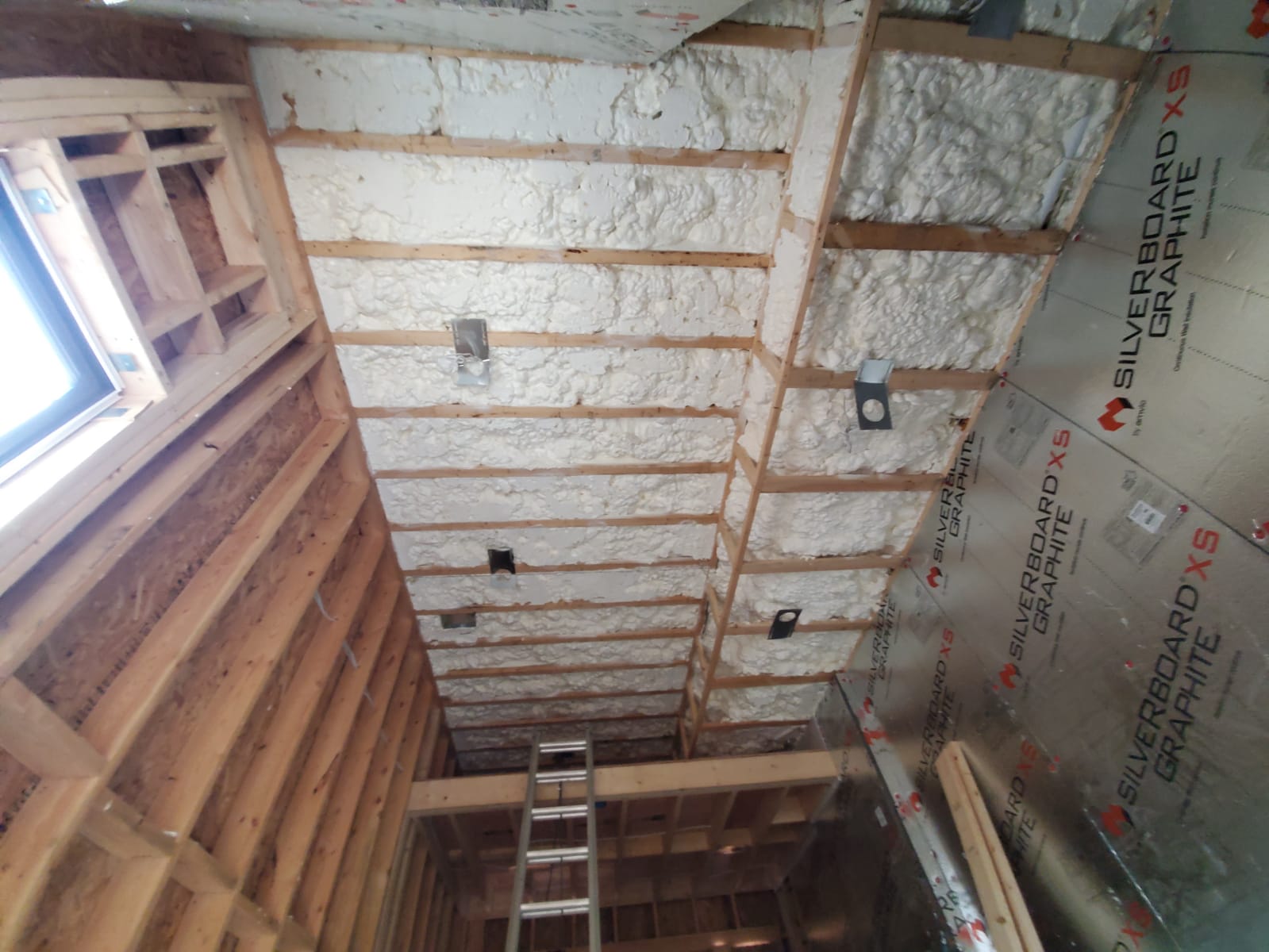Benefits of Spray Cellulose Insulation
This is a subtitle for your new post
Spray cellulose insulation is installed by spraying a mixture of recycled paper fibers, often treated with fire-retardant additives and binders, into walls, attics, and other cavities. The cellulose fibers are combined with water and a special adhesive, which helps the insulation adhere to surfaces and create a dense, effective barrier against heat loss and sound transmission.
- Energy Efficiency: Spray cellulose insulation has a high R-value, which measures its thermal resistance. This means it effectively resists heat transfer, helping to maintain a consistent indoor temperature and reduce heating and cooling costs.
- Sound Absorption: The dense structure of spray cellulose insulation makes it an excellent sound absorber. It can help reduce noise transmission between rooms, making your living spaces quieter and more comfortable.
- Eco-Friendly: Spray cellulose insulation is made from recycled paper, reducing the demand for new raw materials and diverting waste from landfills. Additionally, its production has a lower environmental impact compared to some other insulation materials.
- Air Sealing: Spray cellulose insulation can fill gaps, cracks, and voids in walls and attics, effectively reducing air leakage. This can enhance energy efficiency by minimizing drafts and preventing conditioned air from escaping.
- Fire Resistance: Cellulose insulation is treated with fire-retardant additives, making it relatively fire-resistant. It can slow the spread of flames and provide additional time for occupants to evacuate in case of a fire.
- Moisture Management: The fibers in spray cellulose insulation are treated to resist moisture absorption, helping to prevent mold growth and moisture-related damage in the building envelope.
- Adaptability: Spray cellulose insulation can conform to irregular shapes and cavities, ensuring a seamless installation even in hard-to-reach areas.
Spray cellulose insulation provides an eco-friendly, energy-efficient, and versatile solution for improving the comfort and performance of buildings. Its combination of thermal insulation and sound absorption makes it an attractive option for creating comfortable and quiet living spaces while contributing to energy savings and environmental sustainability.


